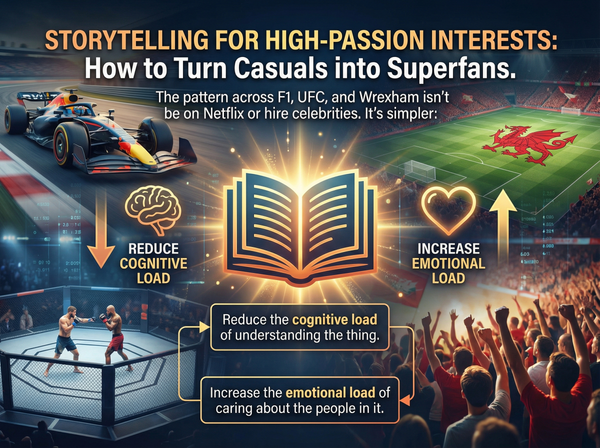Clarity & Confidence: VSL Framework
While storytelling is crucial for building emotional connections, sometimes your audience needs immediate answers to fundamental questions before they're ready for the full narrative. This is where the Clarity & Confidence VSL (Video Sales Letter) framework shines.
This framework prioritizes getting straight to the point, answering the essential Who, What, Where, When, Why questions upfront to build immediate confidence and guide the viewer efficiently through your offering. Think of it as the ultimate no-fluff, high-impact VSL.
By providing immediate value and addressing core concerns, you rapidly qualify your audience and accelerate their journey towards becoming a customer.
Here's a breakdown of this highly effective blueprint, with additional insights for implementation:
1. Who (Is This For?)
Start by clearly defining your ideal customer. Who will benefit most from what you're offering? This immediately qualifies your audience and lets them know if they're in the right place, saving both your time and theirs. By addressing who, you create an instant connection with the right viewers, signaling that you understand their needs and challenges.
- Pro-Tip: Don't just state demographics. Describe their pain points, aspirations, and what they're currently struggling with. Use language they resonate with. For example, instead of Small business owners, try "Tired small business owners struggling to generate consistent leads online".
2. What (Are You Offering?)
Get straight to the point. What exactly is your product or service? Provide a concise and compelling overview of your offer, highlighting its core value proposition. Avoid jargon and focus on what it does for the user, not just what it is. Clarity here is paramount; your audience should instantly grasp the essence of your solution.
- Pro-Tip: Lead with the benefit, then introduce the feature. For instance, "Get crystal-clear audio on your next podcast (benefit) with our noise-cancelling microphone (feature)." Consider using a strong, benefit-driven headline or statement at the very beginning of this section.
3. Where (Can They Get It?)
This addresses practical logistics. Is it an online course, a physical product, a local service? Explain the delivery mechanism or the specific context in which your solution is relevant. This removes any ambiguity about how your audience can access or utilize what you're offering, paving the way for a smooth customer journey.
- Pro-Tip: Be specific. If it's a digital product, explain how it's accessed (e.g., "Immediately available in your member's area after purchase"). If it's a service, clarify geographical limitations or service areas.
4. When (Will They See Results/Can They Start?)
Provide a clear timeline or expectation for results. This manages expectations and motivates action. Is it immediate, within weeks, or after a specific program completion? Also, explain the next steps for them to get started. Knowing when builds anticipation and commitment, turning passive viewers into engaged prospects.
- Pro-Tip: While managing expectations, still emphasize speed and efficiency if applicable. Highlight the fast track or quick start benefits. For example, "Start seeing results within the first 7 days," or "Enroll today and access your first module instantly."
5. Why (Should They Choose You?)
This is your Unique Selling Proposition (USP). Why is your solution superior to alternatives? What makes you different and better? Focus on the benefits that directly address their needs and desires. This is where you differentiate yourself from the competition and provide compelling reasons for them to choose you over anyone else.
- Pro-Tip: Don't just list features; explain the benefit of the benefit. For example, instead of "Our software has AI integration," explain, "Our AI integration saves you 10 hours a week, freeing you up to focus on high-impact tasks." Highlight your unique process, guarantees, or specialized expertise.
6. FAQs (Common Concerns Addressed)
Similar to other frameworks, this section tackles common questions and potential objections, proactively clearing up any confusion and building trust. By anticipating and answering these, you show you understand your audience's hesitations and are transparent about your offering. This also significantly reduces friction in the sales process.
- Pro-Tip: Collect real questions from your customer support, sales calls, or social media. Prioritize the most common objections that might prevent a sale. Address pricing, refund policies, support, or compatibility here.
7. Proof Stack (Credibility Multiplier)
Conclude with a strong proof stack, reinforcing all your claims with undeniable evidence. This solidifies your credibility and pushes hesitant viewers towards a confident decision. Testimonials, case studies, data, and social validation are crucial here to underscore the effectiveness of your solution and silence any lingering doubts.
- Pro-Tip: Diversify your proof. Include written testimonials, video testimonials, logos of companies you've worked with, data showing results, media mentions, and social media engagement. The more varied and compelling your proof, the stronger your case.
Conclusion
By understanding and applying the Clarity & Confidence VSL framework, you're building a strategic communication tool that converts. This framework is particularly effective when your audience is looking for a direct solution and needs to quickly assess if your offering is the right fit. It builds immediate trust by being transparent and efficient, guiding prospects confidently towards a decision.
Keep Crushing!
- Sales Guy

